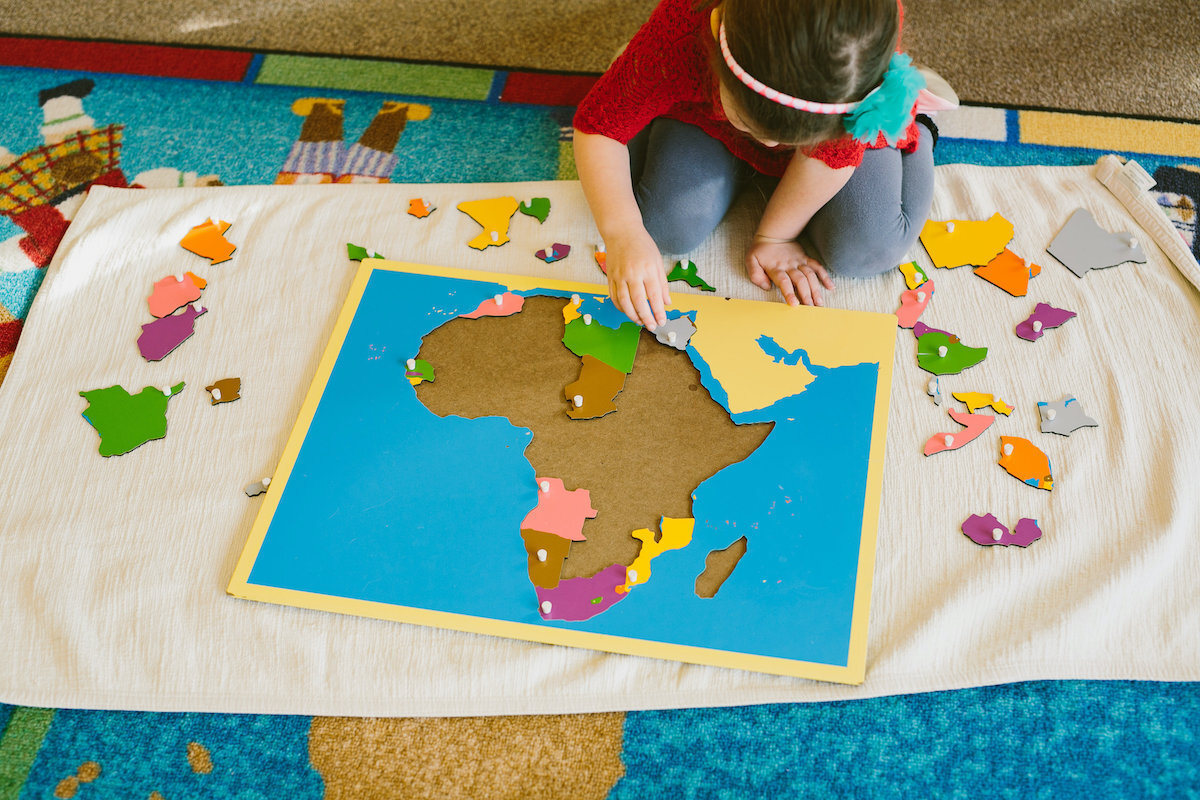When was the last time you read a book that was so good you hated to see it end? Perhaps it was part of a series and you quickly got your hands on the next book, or perhaps it was an author’s style that you loved so you began reading everything you could find that they’d written.
New readers can experience the same feeling. All it takes is one truly positive reading experience to send them searching for more. In this article we share some series of various levels that may just be your child’s new (amazing) obsession.
Written by a Montessori guide, these books are perfect for the very earliest readers. While animals feature heavily as the main characters in most of the books, there is some much needed diversity among children characters that is lacking in many early readers. There are now several sets to choose from, but the first set boasts delightful plotlines including a swimming dog who ends up getting children wet, a pair of robins defending their nest from a cat, children catching and releasing a crab at the beach, a very muddy pig, and a clever plan to retrieve an escaped hamster.
Officially, there are 25 books in this series, and there’s no need to read them in any particular order. Gerald the Elephant and his friend Piggie share many adventures, learn about life, and make children and their adults laugh. It’s likely their relatability that makes these books so appealing; the characters’ personalities are quite different yet compliment each other, and they experience emotions and events that kids face in real life. These books are so popular, that several more have been written by other authors as spin-offs, with the original characters featuring briefly. Children will enjoy them from the preschool years into early lower elementary.
These books are so sweet it’s almost impossible not to love them. There are more than 20 books and each features mice characters that are personified and navigating the same life experiences as young children. These are likely best utilized as read alouds during the primary years, and as independent reads during lower elementary. Children will learn what to do when a guest behaves less than stellar, how to handle worries, why it’s important to love oneself in the face of teasing, dealing with the complicated emotions of having a new baby sibling, and so much more.
Princess Magnolia is a proper princess. She hosts polite tea parties, rides a beautiful horse, and dresses as one might imagine a princess typically does. The twist is, she leads a double life. Occasionally she must politely excuse herself to the broom closet to change into her superhero clothing, leap onto her valiant steed, and rush off to stave off monsters. The princess makes some unlikely friends and allies throughout the series, and her one-person mission to defend and protect soon expands to include a merry band of do-gooders. Perfect for kindergarten through lower elementary.
Our Friend Hedgehog, The Story of Us
Author and illustrator Lauren Castillo released the first installment of a new series this past May. Young Hedgehog and her friend Mutty live an idyllic life on a tiny island in the center of a river. When a fierce storm blows Mutty away, Hedgehog is forced to leave home and search for her friend. Along the way she makes new friends who join in the search, each contributing their own unique talents and abilities. This book might be described as whimsical, enchanting, and full of the hope friendship gives us. Great for lower elementary.
Beverly Cleary’s books about Ramona Quimby and her family are undoubtedly classics. The series begins as Ramona enters kindergarten and follows her through the fourth grade; children of these ages (and perhaps even a bit older) will love reading these books. Cleary wrote them to be relatable, and the main character stumbles her way through childhood just like any other. Ramona admires her older sister Beezus, at least some of the time. She loves school and her teachers, except when it comes to spelling. She navigates friendships, changes in her family, and stays true to herself.
For the nonfiction lovers out there, this popular series highlights the biographical tales of influential historical figures. Ideal for children in later lower elementary and into upper elementary, each book is well organized and features informative chapters and illustrations. There are more than 250 books total - below are just a small sampling of people the series covers:
Frida Kahlo
Jane Austen
Andrew Jackson
Pope Francis
Charlie Chaplin
George Washington Carver
Gloria Steinem
Jesse Owens
Where the Mountain Meets the Moon, Starry River of the Sky, and When the Sea Turned to Silver
Newbury Honor author Grace Lin has created this stunning trilogy of books. They need not be read in order, or even together, but they do serve as companions to one another. Lin carefully researches traditional storytelling in Chinese culture and weaves the tales into her books. Utilizing a story-within-a-story format, she takes readers on epic adventures alongside carefully crafted characters that we can’t help but become attached to. Geared for children ages 8-12, the books could be enjoyed as a read aloud for slightly younger children.
C.S. Lewis’ seven-book series has been loved by children for generations. Although the second book - The Lion, the Witch and the Wardrobe - is perhaps the most well-known, the series as a whole is captivating. Start with The Magician’s Nephew and work your way through the magical world of Narnia, book by book.























